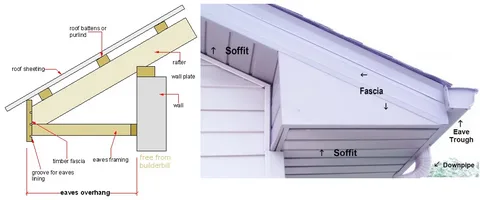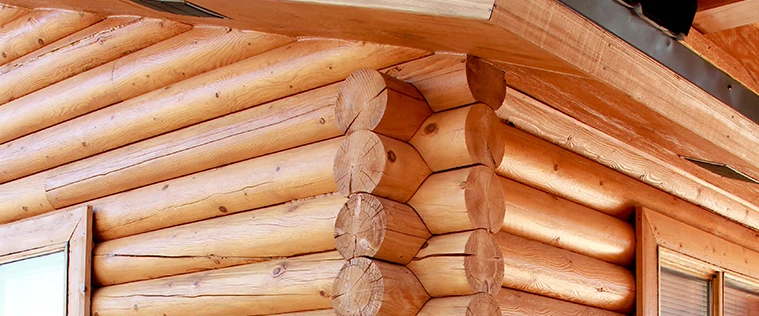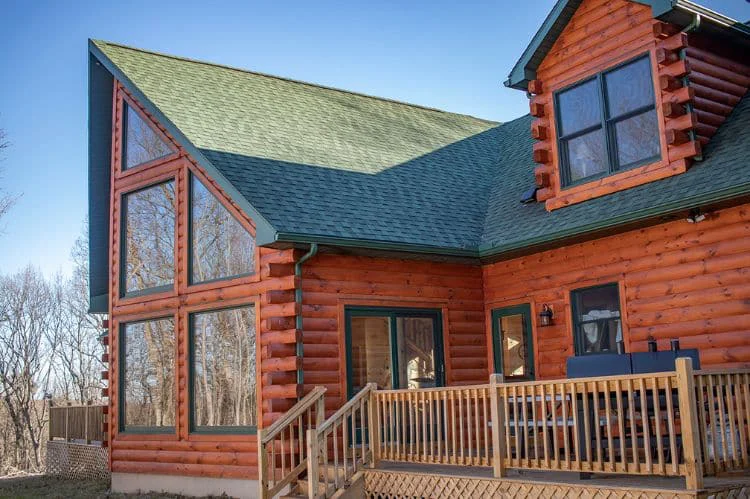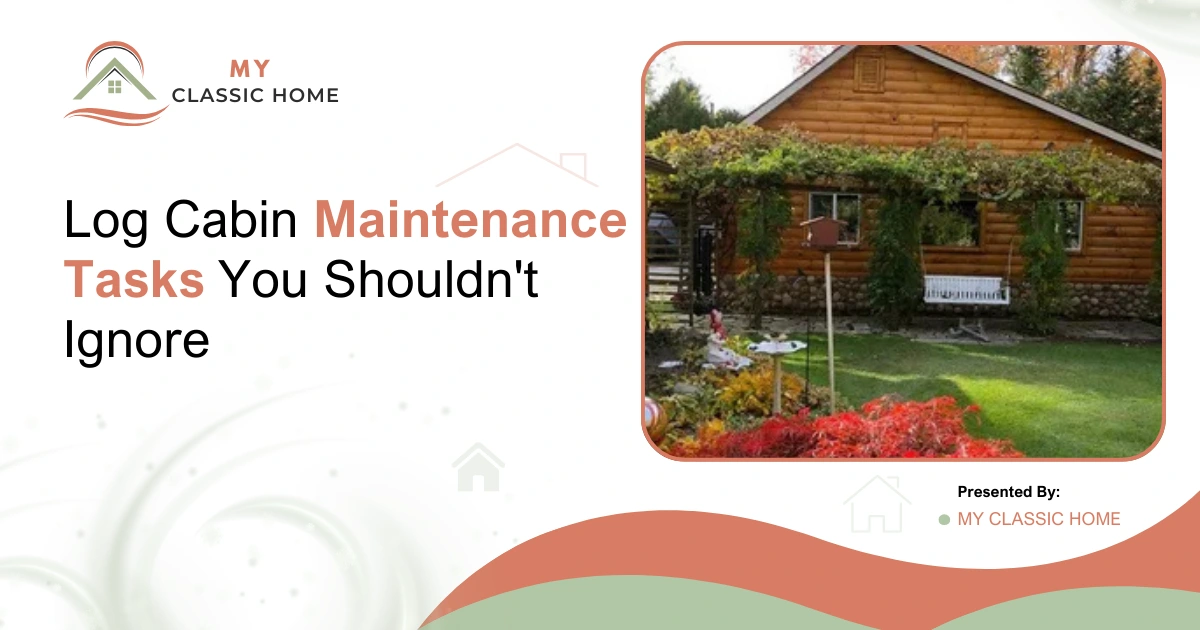When it comes to log cabin maintenance, many people focus on the obvious: cleaning the logs, applying protective coatings, and checking the roof. While these tasks are essential, other less obvious chores can make a huge difference in your cabin’s longevity and efficiency. Here are 10 log home maintenance checklist tasks that are often overlooked but are critical in keeping your cabin in shape.
1. Ventilate Your Crawl Space
Many log cabins, especially older ones, have crawl spaces that may trap moisture if not well-ventilated. Moisture leads to wood rot, mold, and, in severe cases, structural damage. Installation or maintenance of crawl space vents helps air circulation, which keeps the area dry and prevents long-term damage.
Why it matters: Moisture in the crawl space can lead to foundation problems and also attract pests such as termites.
2. Check for Thermal Bridging
Thermal bridging can also happen when materials, such as metal or wood, conduct heat more easily. In a log cabin, areas where logs meet other materials, like metal fasteners and around windows and doors, can be places of thermal bridging. Over time, this will also increase the heating costs.
Why it matters: Addressing thermal bridging will enhance your cabin’s energy efficiency, allowing it to retain warmth during winter and cool down during summer.
3. Check Eaves and Overhang

The eaves and overhangs of your log cabin protect the logs from rain and snow dripping directly on them, but in many cases, they’re neglected during maintenance routines. Leaves, dirt, and debris may accumulate, blocking water flow and creating pools of water on logs or walls. This might cause rot and water damage.
Why it matters: Keeping your eaves clean helps water run off properly and protects your cabin from moisture-related damage.
4. Check for Air Leaks in Unlikely Places
Air leaks usually occur around windows and doors, but there are areas where you probably never expected to have air gaps. Inspect the air leaks around your chimney, under the floors, and in the attic. These tiny air leaks can hugely impact the cabin’s energy efficiency, increasing heating and cooling costs.
Why it matters: Air leak sealing ensures that there is a constant indoor temperature and reduces energy bills.
5. Check Soil Movement Around the Foundation
The soil around your cabin’s foundation settles and erodes, changing moisture levels. This can cause cracks or even shifting in the foundation. Monitoring soil movement and filling low spots around the foundation regularly helps prevent these issues from becoming serious problems.
Why it matters: Preventing soil movement ensures the stability of the foundation and avoids expensive structural repairs down the line.
6. Protect the Bottom of the Logs

Most people care for the visible parts of the logs, leaving out the bottoms, which meet at the foundation or ground. These portions tend to suffer from more moisture and insects. They need a specific bottom part protector coating applied and ensured not to gather dirt or debris.
Why it matters: Most moisture and pest damage occur at the bottom of the logs. If this area is protected and inspected regularly, major structural problems can be prevented.
7. Trim Trees and Shrubs Near Your Cabin
Trees and shrubs encroaching on your cabin can cause many problems. They can trap moisture against the logs, encourage pests, or even cause physical damage during storms. Regularly trimming back branches that hang over your roof or near the cabin’s walls helps to prevent these issues.
Why it matters: Keeping vegetation away from the cabin reduces the chances of water damage, mold, and pest infestation.
8. Clean and Maintain the Sill Log
The sil log is the first log from the foundation and bears the entire cabin’s weight. Over time, dirt, moisture, debris, and pests can enter this area and cause rot or pest infestation. Therefore, this area must be kept clean and treated with the right preservative on the sill log.
Why it matters: The sill log is foundational to the entire structure, and any damage here can compromise the integrity of the entire cabin.
9. Inspect the Vapor Barrier

Often, a crawl space or basement exists with cabins, and to protect against moisture seepage into the structure, a vapor barrier is commonly used. However, the barrier can break down, allowing moisture in. Check the vapor barrier periodically and replace damaged parts.
Why it matters: A good vapor barrier prevents wood rot, mold, and mildew, which can deteriorate the cabin’s interior.
10. Test Your Water System Periodically
If your cabin uses well water or a septic system, these systems will need to be maintained regularly. Test the water for contaminants and check the pressure tank pipes and filters for any issues. Also, inspect your septic system for signs of problems such as slow drains or foul odors.
Why it matters: Clean, safe water and a well-functioning septic system are critical for comfort and health in your log cabin.
Why These Tasks Matter
Though more mundane tasks such as staining the logs or cleaning gutters are often necessary for maintaining a log cabin, these small and seemingly insignificant tasks may greatly affect your cabin’s general health. Neglecting these details can mean significant repair bills in the long run. Being vigilant about these areas and regularly checking them can ensure your cabin remains in good shape for many years to come while helping you manage the maintenance cost of your log cabin effectively.
Conclusion
Log cabin home maintenance is way more than just the readily apparent work. Most often, behind-the-scenes types of tasks can make a huge difference in what you end up with, and your cabin will be in good health. If such often-overlooked activities are integrated into your schedules, then you avoid sneaky problems, and your log cabin remains a beautiful haven that is safe and comfortable for an extended period. Account for routine and major repairs on your cabin maintenance cost so that it keeps appearing at its best at all times.
FAQs
What are the best materials for sealing a log cabin?
Use chinking for gaps between logs and caulking for windows/doors. Opt for breathable sealants to prevent moisture buildup.
What’s the ideal moisture level for log cabin wood?
The ideal moisture content is 12-15%. Use a moisture meter to monitor levels and avoid rot or cracking.
What maintenance should be done before winter?
Inspect and seal the roof, windows, and doors. Clean gutters, check log condition and ensure your heating system is working.




